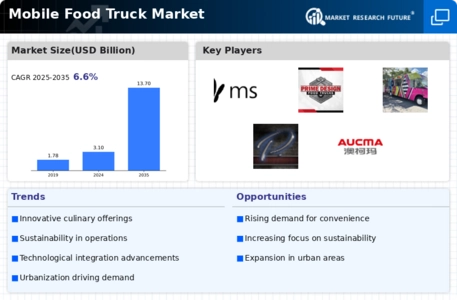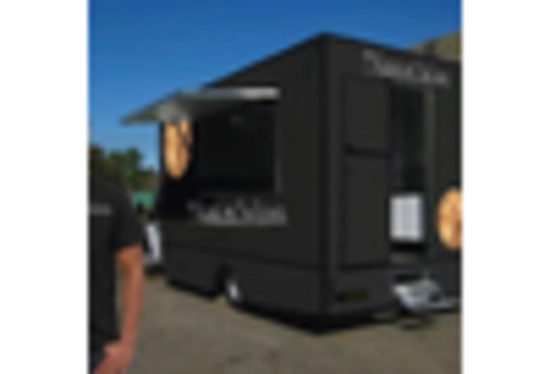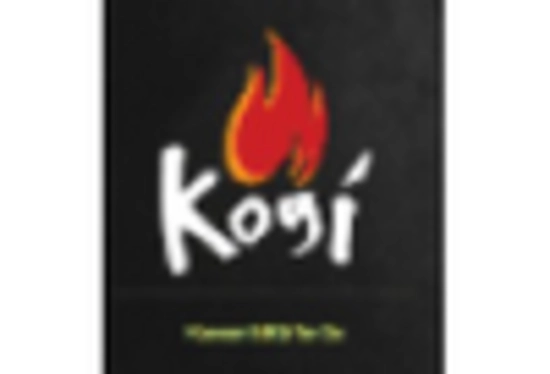Mobile Food Truck Market Summary
As per Market Research Future analysis, the Mobile Food Truck Market Valuation was estimated at 3.1 USD Billion in 2024. The Mobile Food Truck industry is projected to grow from 3.305 USD Billion in 2025 to 6.275 USD Billion by 2035, exhibiting a compound annual growth rate (CAGR) of 6.62% during the forecast period 2025 - 2035
Key Market Trends & Highlights
The Mobile Food Truck Market is experiencing dynamic growth driven by culinary diversity and technological advancements.
- Culinary diversity continues to shape menu offerings, appealing to a broad range of consumer tastes in North America.
- Sustainability practices are increasingly prioritized, with food trucks adopting eco-friendly materials and waste reduction strategies.
- Technological integration, including mobile ordering and payment systems, enhances customer convenience and operational efficiency.
- Urbanization and consumer preference for convenience are major drivers, particularly benefiting the electric food truck segment in North America and the unpowered food truck segment in scenic spots across Asia-Pacific.
Market Size & Forecast
| 2024 Market Size | 3.1 (USD Billion) |
| 2035 Market Size | 6.275 (USD Billion) |
| CAGR (2025 - 2035) | 6.62% |
Major Players
Gourmet Food Trucks (US), The Grilled Cheese Truck (US), Kogi BBQ (US), Frysmith (US), Curry Up Now (US), Dosa Truck (US), Sweetery NYC (US), The Lobos Truck (US)


















Leave a Comment